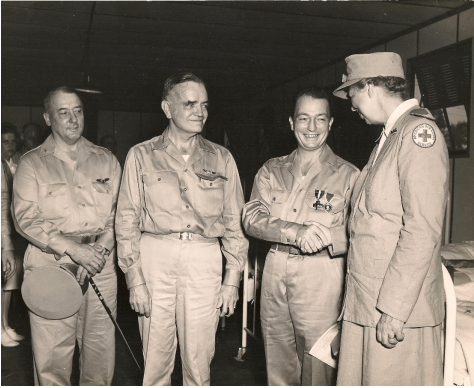by guest columnist Brian Miskell
Students in this year’s Exhibition Planning class were given a challenge: choose an image that inspires you from the photographs in Historic New England’s exhibition, “The Camera’s Coast,” and use it as a jumping-off point for a full-blown exhibition plan. Snapshots: 15 Takes on an Exhibition is to take place at the Tufts University Koppleman Gallery May 6-18, 2014. Opening reception Tuesday, May 6, 2014, 5:30-8pm. See the Facebook page here.
My exhibition plan focuses on the career of Fleet Admiral William F. “Bull” Halsey, US Navy (Retired). My photograph is of the first ship he served on fresh out of the Naval Academy, USS Missouri (BB-11).
I was recently reading Halsey’s autobiography, Admiral Halsey’s Story, which he wrote after World War II. From October 18, 1942 until July 15, 1944, Halsey served as Commander, South Pacific Area. While reading this section of his book, I saw a passage describing how Eleanor Roosevelt was to visit his area. Reading this, I recalled seeing a photograph that included someone I believed at the time could have been Eleanor Roosevelt among a large group photos that my grandfather had kept from his time serving in the 13th Army Air Force in the Pacific during World War II. After reading about the visit, I retrieved the collection of photos, went through them, and found two photos that included both Halsey and Mrs. Roosevelt. The activity taking place in one of the photos is actually described in Halsey’s book, “At one hospital, I arranged for her to pin the Navy Cross and two Purple Hearts on my ‘one-man army,’ Lieutenant Miller of the Strong.”

While I am not sure where my grandfather obtained the prints, I’m assuming they were stock photos he acquired as he wasn’t in the area at the time.
The story of what Lieutenant Hugh Barr Miller, Jr. had done to receive the Navy Cross is quite extraordinary. While it is outside the scope of my exhibition, it is certainly worth sharing here. Over a month before Mrs. Roosevelt’s visit, the ship Miller served on, the destroyer USS Strong, was sunk at the Battle of Kula Gulf. Lieutenant Miller was one of six survivors who drifted ashore on an island four days after the battle. Two of the six died on their injuries over the next few days. Miller was so weak from his injuries and convinced he was going to die that he gave the surviving enlisted sailors most of his clothing and equipment and ordered them to try and make their way to U.S. forces. Despite his strong belief that he was going to die, Miller regained his strength as a result of water from a heavy rain fall and coconut meat. He came across a dead Japanese soldier and took his weapons, rations, and clothing. This stripped soldier gave away the
fact that Miller was on the island to the Japanese, resulting patrols being sent out. Over the 45 days, before Miller was picked up by an amphibious plane, he killed at least 30 Japanese soldiers with his scavenged supplies and collected a large amount of valuable intelligence data.
Leave a Reply